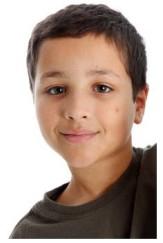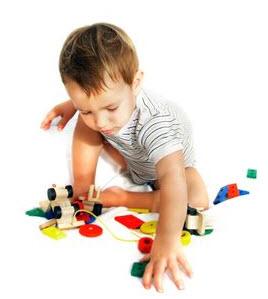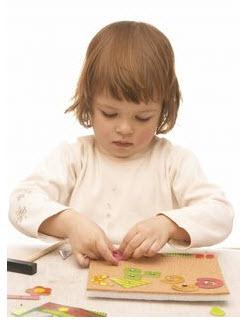SOCIAL SKILLS

Social issues are one of the most common symptoms in all of the types of ASD. People with an ASD do not have just social “difficulties” like shyness. The social issues they have cause serious problems in everyday life.
Examples of social issues related to ASD:
- Does not respond to name by 12 months of age
- Avoids eye-contact
- Prefers to play alone
- Does not share interests with others
- Only interacts to achieve a desired goal
- Has flat or inappropriate facial expressions
- Does not understand personal space boundaries
- Avoids or resists physical contact
- Is not comforted by others during distress
- Has trouble understanding other people’s feelings or talking about own feelings
Typical infants are very interested in the world and people around them. By the first birthday, a typical toddler interacts with others by looking people in the eye, copying words and actions, and using simple gestures such as clapping and waving “bye bye”. Typical toddlers also show interests in social games like peek-a-boo and pat-a-cake. But a young child with an ASD might have a very hard time learning to interact with other people.
Some people with an ASD might not be interested in other people at all. Others might want friends, but not understand how to develop friendships. Many children with an ASD have a very hard time learning to take turns and share—much more so than other children. This can make other children not want to play with them.
People with an ASD might have problems with showing or talking about their feelings. They might also have trouble understanding other people’s feelings. Many people with an ASD are very sensitive to being touched and might not want to be held or cuddled. Self-stimulatory behaviors (e.g., flapping arms over and over) are common among people with an ASD. Anxiety and depression also affect some people with an ASD. All of these symptoms can make other social problems even harder to manage.
COMMUNICATION
Each person with ASD has different communication skills. Some people can speak well. Others can’t speak at all or only very little. About 40% of children with an ASD do not talk at all. About 25%–30% of children with ASD have some words at 12 to 18 months of age and then lose them .Others might speak, but not until later in childhood.
Examples of communication issues related to ASD:
- Delayed speech and language skills
- Repeats words or phrases over and over (echolalia)
- Reverses pronouns (e.g., says “you” instead of “I”)
- Gives unrelated answers to questions
- Does not point or respond to pointing
- Uses few or no gestures (e.g., does not wave goodbye)
- Talks in a flat, robot-like, or sing-song voice
- Does not pretend in play (e.g., does not pretend to “feed” a doll)
- Does not understand jokes, sarcasm, or teasing
People with ASD who do speak might use language in unusual ways. They might not be able to put words into real sentences. Some people with ASD say only one word at a time. Others repeat the same words or phrases over and over. Some children repeat what others say, a condition called echolalia. The repeated words might be said right away or at a later time. For example, if you ask someone with ASD, “Do you want some juice?” he or she might repeat “Do you want some juice?” instead of answering your question. Although many children without an ASD go through a stage where they repeat what they hear, it normally passes by three years of age. Some people with an ASD can speak well but might have a hard time listening to what other people say.
People with ASD might have a hard time using and understanding gestures, body language, or tone of voice. For example, people with ASD might not understand what it means to wave goodbye. Facial expressions, movements, and gestures may not match what they are saying. For instance, people with an ASD might smile while saying something sad.
People with ASD might say “I” when they mean “you,” or vice versa. Their voices might sound flat, robot-like, or high-pitched. People with an ASD might stand too close to the person they are talking to, or might stick with one topic of conversation for too long. They might talk a lot about something they really like, rather than have a back-and-forth conversation with someone. Some children with fairly good language skills speak like little adults, failing to pick up on the “kid-speak” that is common with other children.
UNUSUAL INTERESTS AND BEHAVIORS

Many people with ASD have unusual interest or behaviors. Examples of unusual interests and behaviors related to ASD:
- Lines up toys or other objects
- Plays with toys the same way every time
- Likes parts of objects (e.g., wheels)
- Is very organized
- Gets upset by minor changes
- Has obsessive interests
- Has to follow certain routines
- Flaps hands, rocks body, or spins self in circles
Repetitive motions are actions repeated over and over again. They can involve one part of the body or the entire body or even an object or toy. For instance, people with an ASD might spend a lot of time repeatedly flapping their arms or rocking from side to side. They might repeatedly turn a light on and off or spin the wheels of a toy car. These types of activities are known as self-stimulation or “stimming.”
People with ASD often thrive on routine. A change in the normal pattern of the day—like a stop on the way home from school—can be very upsetting to people with ASD. They might “lose control” and have a “melt down” or tantrum, especially if in a strange place.
Some people with ASD also may develop routines that might seem unusual or unnecessary. For example, a person might try to look in every window he or she walks by a building or might always want to watch a video from beginning to end, including the previews and the credits. Not being allowed to do these types of routines might cause severe frustration and tantrums.
OTHER SYMPTOMS
Some people with ASD have other symptoms. These might include:
- Hyperactivity (very active)
- Impulsivity (acting without thinking)
- Short attention span
- Aggression
- Causing self injury
- Temper tantrums
- Unusual eating and sleeping habit
- Unusual mood or emotional reactions
- Lack of fear or more fear than expected
- Unusual reactions to the way things sound, smell, taste, look, or feel
People with ASD might have unusual responses to touch, smell, sounds, sights, and taste, and feel. For example, they might over- or under-react to pain or to a loud noise. They might have abnormal eating habits. For instance, some people with an ASD limit their diet to only a few foods. Others might eat nonfood items like dirt or rocks (this is called pica). They might also have issues like chronic constipation or diarrhea.
People with ASD might have odd sleeping habits. They also might have abnormal moods or emotional reactions. For instance, they might laugh or cry at unusual times or show no emotional response at times you would expect one. In addition, they might not be afraid of dangerous things, and they could be fearful of harmless objects or events.
DEVELOPMENT

Children with ASD develop at different rates in different areas. They may have delays in language, social, and learning skills, while their ability to walk and move around are about the same as other children their age. They might be very good at putting puzzles together or solving computer problems, but they might have trouble with social activities like talking or making friends. Children with an ASD might also learn a hard skill before they learn an easy one. For example, a child might be able to read long words but not be able to tell you what sound a “b” makes.
Children develop at their own pace, so it can be difficult to tell exactly when a child will learn a particular skill. But, there are age-specific developmental milestones used to measure a child’s social and emotional progress in the first few years of life. To learn more about developmental milestones, visit “Learn the Signs. Act Early,” a campaign designed by CDC and a coalition of partners to teach parents, health care professionals, and child care providers about early childhood development, including possible “red flags” for autism spectrum disorders.
References
- Johnson, C.P. Early Clinical Characteristics of Children with Autism. In: Gupta, V.B. ed: Autistic Spectrum Disorders in Children. New York: Marcel Dekker, Inc., 2004:85-123.
OLG AUTISM NIGERIA SUPPLEMENT-General Tips and Suggestions.
- Dosage recommendations for the vast majority of supplements are not toxic or dangerous.
- Every child is different. Therefore, you may have to try different supplement products to find the right fit.
- Supplements need to be treated as medicine with the same dedication for administration.
- Consistency in taking supplement is important. However, on some days certain supplements may be missed or forgotten. Just pick up the next day and keep moving forward. Not every day will be perfect.
- Most supplements can be mixed together with a few exceptions:
- Avoid calcium and zinc together- separate by a few hours.
- Avoid zinc and copper together – separate by a few hours.
- Take zinc and copper with small amount of food if possible to prevent nausea.
- Probiotics with digestive enzymes (debatable problem) – a general rule of thumb is to separate by at least an hour, or take probiotics at night before bed.
- Most supplements can be mixed in juice or food, unless otherwise indicated on packaging.
- Introduce one new supplement at a time. The general recommendation is one new supplement every 24 to 48 hours.
- Most multi-vitamins/minerals can be mixed in organic berry or pear baby food or puree. A tart juice can work as well. Fruit smoothies also work well as medium for supplement administration.
- Avoid adding vitamins to hot food or cooking them with baking powder.
- Minerals ie calcium, magnesium, iron, selenium, can be cooked and baked into foods without affecting their potency-vitamins and herbs cannot.
- Many of the minerals and vitamins can also be added to drinks.
- Some liquid calcium and magnesium products can be salty. It is recommended to use in small doses(1/4 to ½ tablespoon)and mix into foods that require salt(rice, soups, or sauces) or mix with a stronger juice such as cranberry or grape.
- Ideally probiotics should be separated from antimicrobial supplements by at least few hours. Again, bedtime dosing is an option.
- If taking a probiotics supplement and a prescription antibiotic or antimicrobial botanical(aka herbal), it is recommended to dose the probiotics at night before bed- at least 2 hours after the last dose of the herbal supplement or antibiotic.
- Probiotics- place in cool food, water or diluted juice.
